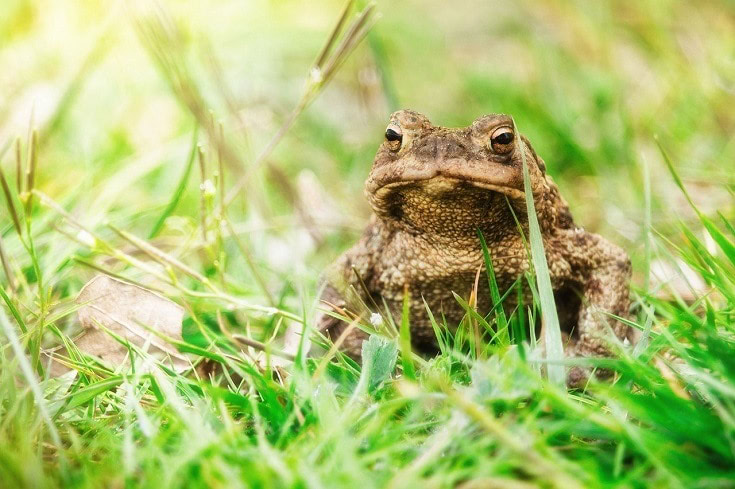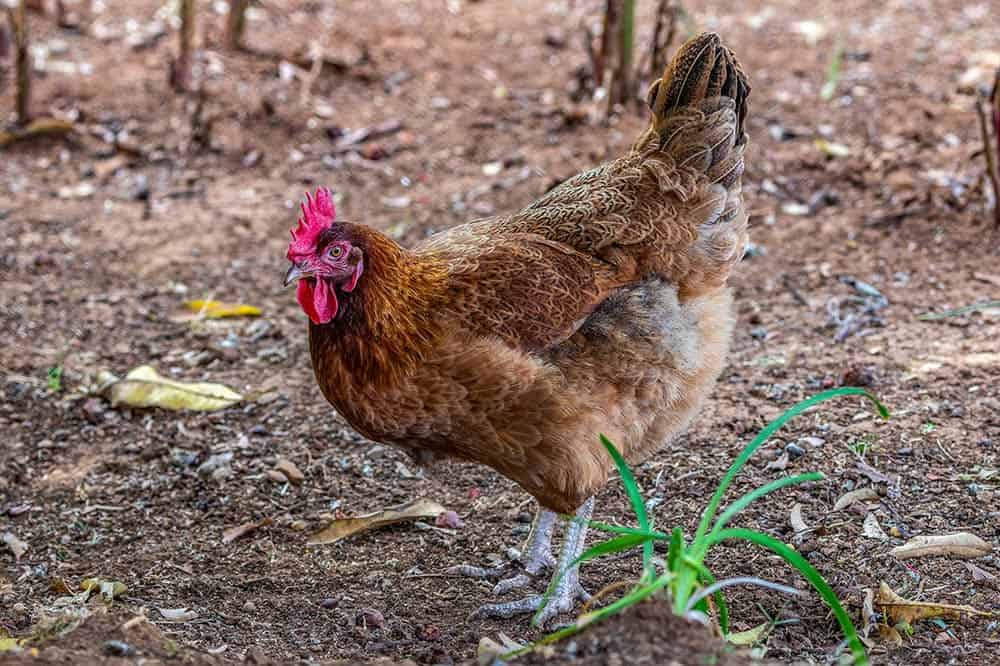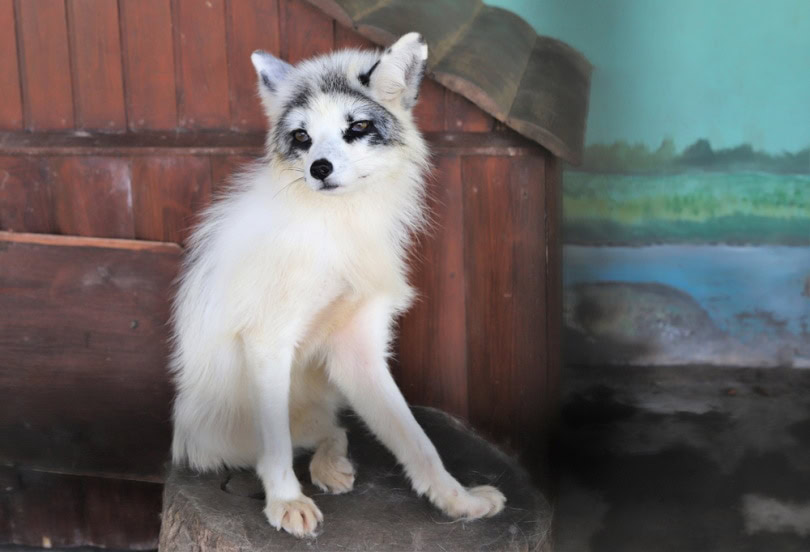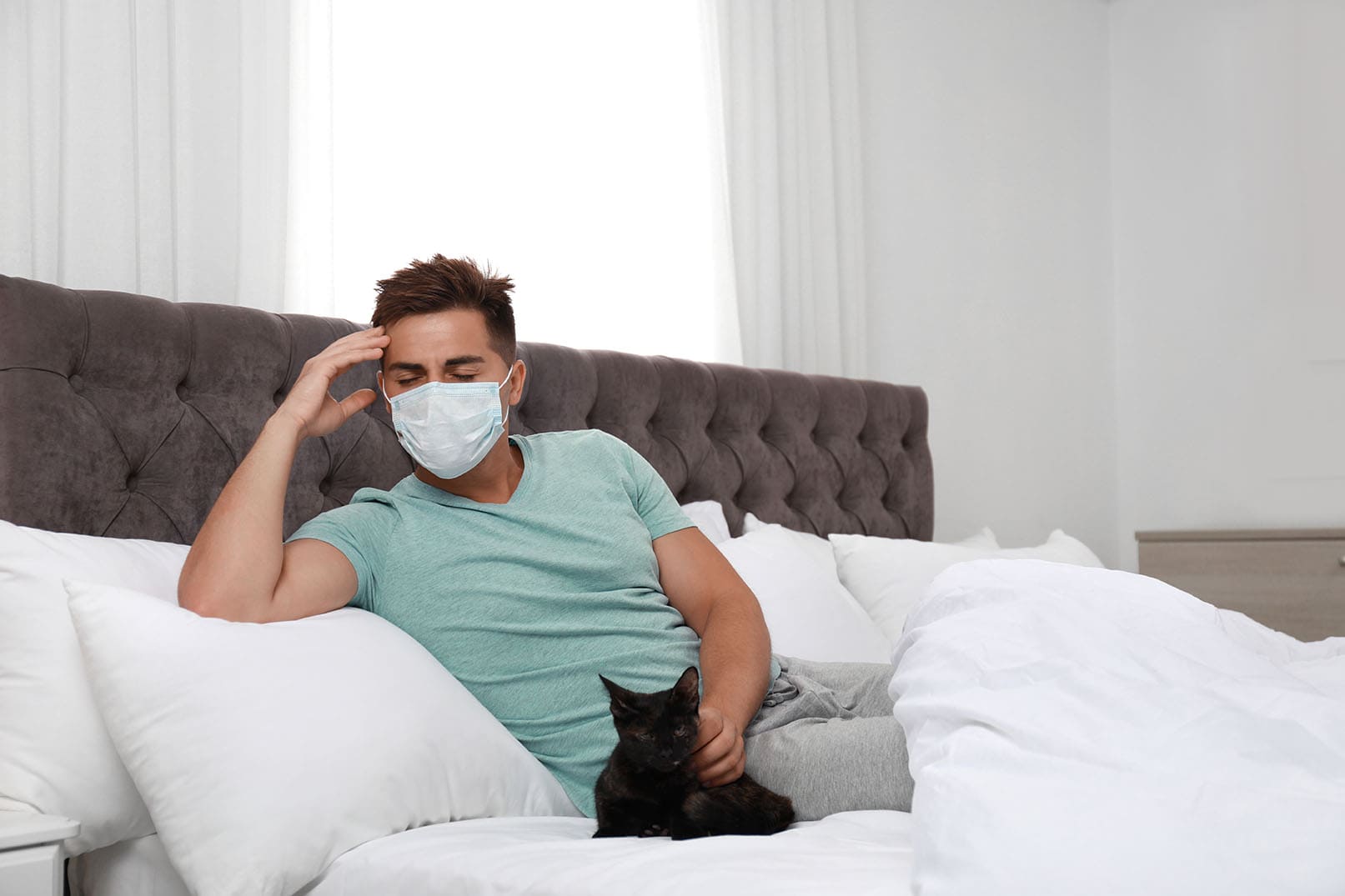VET APPROVED

The information is current and up-to-date in accordance with the latest veterinarian research.
Learn more »Click to Skip Ahead
Toads are such interesting little creatures. It’s common to find them hopping around outside, and they’re often so cute, it can be hard to resist picking them up. You may have heard the old wives’ tale of toads giving their handlers warts, and while this is not true, you still shouldn’t handle wild toads, as it will stress them out and some species do secrete skin-irritating toxins.1
Just like frogs, toads are amphibians. The only differences between the two are that toads have skin bumps and crests behind their eyes, which are their parotid glands, and lack teeth. Many people keep frogs as pets, but what about toads? Do they make good pets?
Toads can make interesting pets but they aren’t for everyone. These aren’t animals that you can play with. They are better just being observed. If you love amphibians and are prepared to care for a pet that should get little to no handling, a toad may be right for you.

Toads as Pets
Please note that many states and jurisdictions have legislation that prevents capturing or owning wild toads. Always make sure you have permission to legally own an exotic pet before deciding to adopt one. Capturing wild animals is not advised, as this disrupts local ecosystems. Toads naturally produce toxins, so they are not considered safe pets for children, the elderly, pregnant people, or immunocompromised individuals. They can also prove problematic for other pets, including dogs and cats. In addition, amphibians may naturally harbor Salmonella and spread it to humans and other pets.
If you are in the U.S., please refer to state laws before deciding to adopt an exotic or wild pet. Elsewhere, please refer to the relevant jurisdictions in your area.
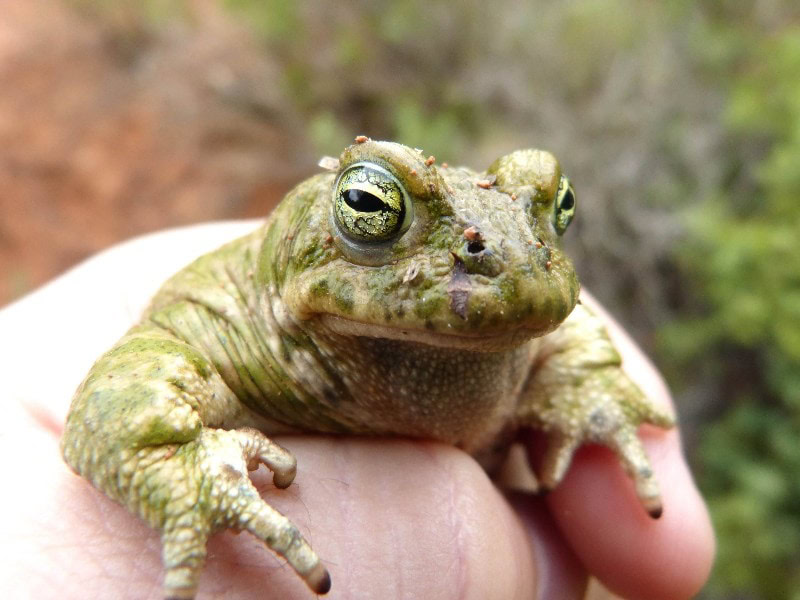
Toads secrete toxins through their skin as a defense mechanism. They are also known to pee in self-defense, especially when handled by humans. Hand washing is a necessity when handling toads, and gloves are also recommended.
These animals become stressed easily and will use these defense tactics whenever handled. That’s not to say that a toad cannot become used to their owner, but it’s best to ensure that you minimize handling your pet.
Toads will recognize a routine and will associate you with feeding time. You can expect to be greeted by your hungry little amphibian upon arrival.
They typically reach adult size in 6 to 18 months, depending on the species. You’ll want to thoroughly clean their habitat once per week and always provide them with fresh water.

The 6 Common Toad Species Kept as Pets
Now that we know toads can make great pets if they are well cared for and observed rather than handled, let’s take a look at the most common species of toads kept as pets.
1. American Toad
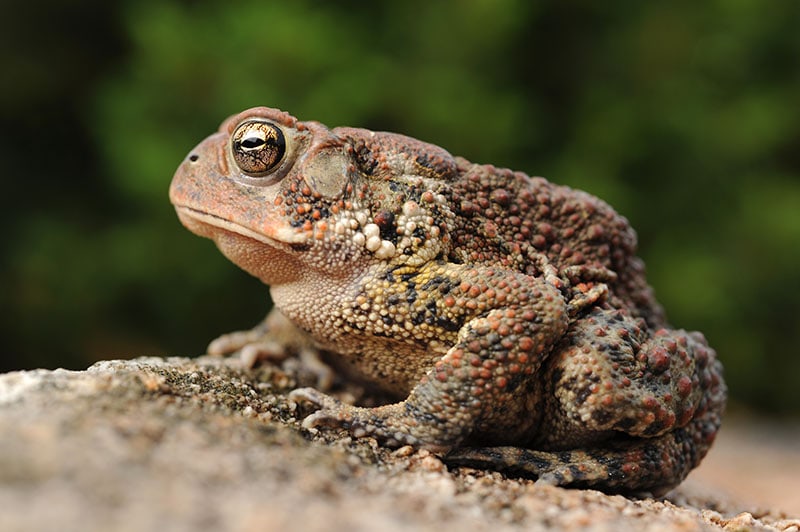
| Experience Level: | Beginner |
| Family: | Bufonidae |
| Scientific Name: | Anaxyrus americanus |
| Adult Size: | 2–4.5 inches (5–11 cm) |
| Lifespan: | 15 years |
| Diet: | Insects, spiders, earthworms, slugs, and other invertebrates. |
| UVB Lighting: | Not required |
| Temperature Range: | 60 to 70°F (15.6 to 21°C) |
| Minimum Tank Size: | 10 gallons |
The American toad is found in most areas of eastern Canada and the United States. They are one of the best pet toads for beginners.
2. California Toad
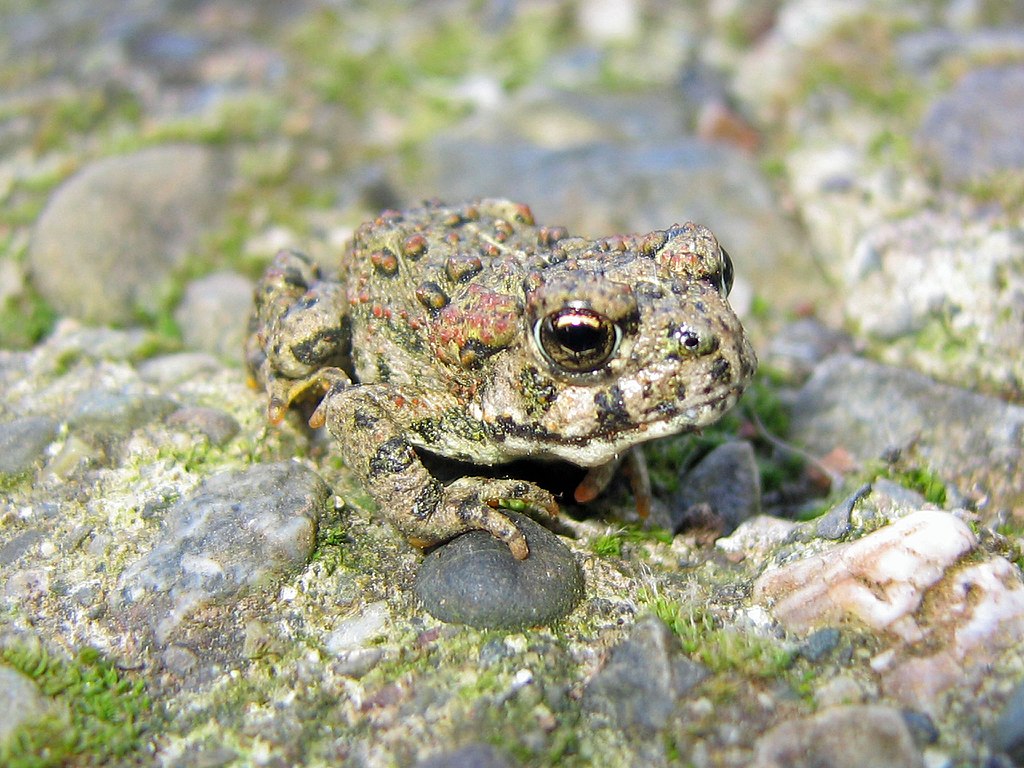
| Experience Level: | Beginner |
| Family: | Bufonidae |
| Scientific Name: | Anaxyrus boreas halophilus |
| Adult Size: | 2–5 inches (5–10 cm) |
| Lifespan: | 5 years |
| Diet: | Fish food pellets, blood worms, shrimps |
| UVB Lighting: | Low-level UVB |
| Temperature Range: | 75°F (24°C) |
| Minimum Tank Size: | 10 gallons |
California toads, also known as western toads, can be easy pets to care for but typically do not like being handled.
3. Cane Toad
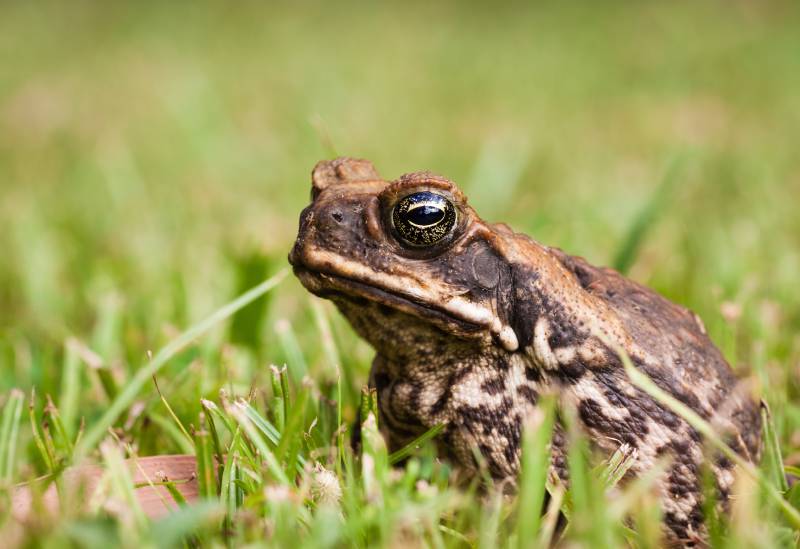
| Experience Level: | Beginner to intermediate |
| Family: | Bufonidae |
| Scientific Name: | Rhinella marina |
| Adult Size: | 4–6 inches |
| Lifespan: | 15–25 years |
| Diet: | Crickets, small rodents, insects |
| UVB Lighting: | Not required |
| Temperature Range: | Minimum 75°F (24°C) |
| Minimum Tank Size: | 20 gallons |
The cane toad is a perfect choice if you’re looking for a larger toad. They are olive green in color and can live up to 25 years. They are moderately active and low-maintenance pets.
4. Oak Toad
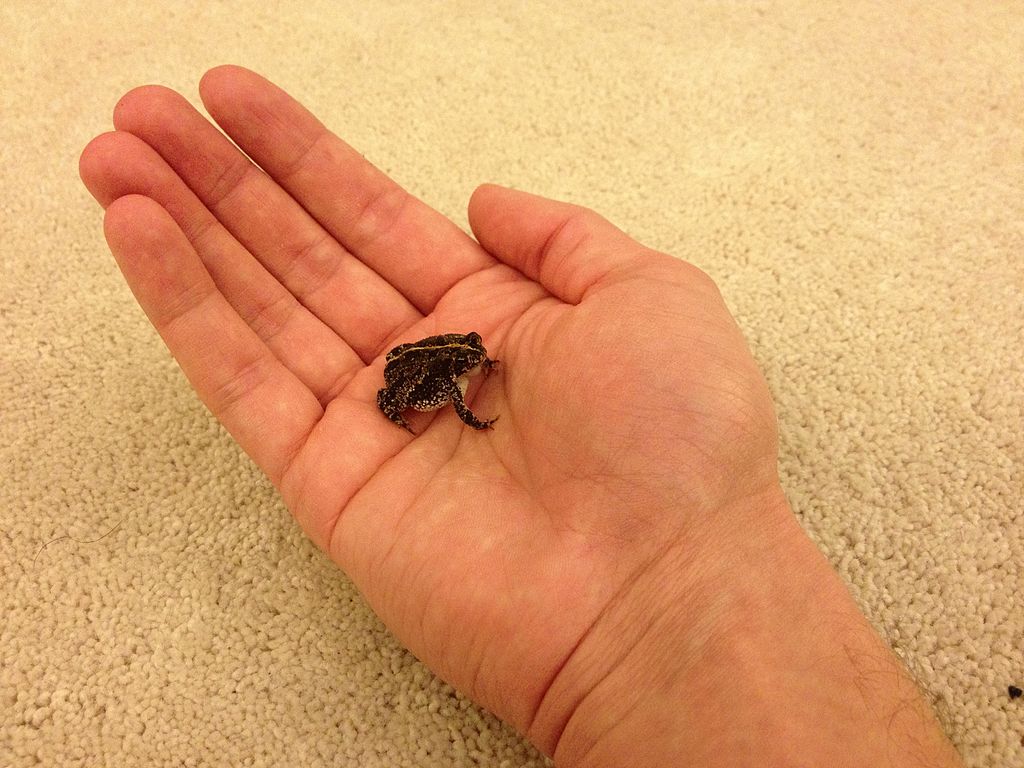
| Experience Level: | Intermediate |
| Family: | Bufonidae |
| Scientific Name: | Anaxyrus quercicus |
| Adult Size: | 0.75–1.53 inches (1.9–3.3 cm) |
| Lifespan: | 2–4 years |
| Diet: | Small crickets, insects, small roaches |
| UVB Lighting: | Low-level UVB preferred |
| Temperature Range: | 75 to 80°F (24 to 26.7°C) |
| Minimum Tank Size: | 10 gallons |
The oak toad is the smallest toad in North America. They are a short-lived species, typically living about 3 years.
5. Oriental Fire-Bellied Toad
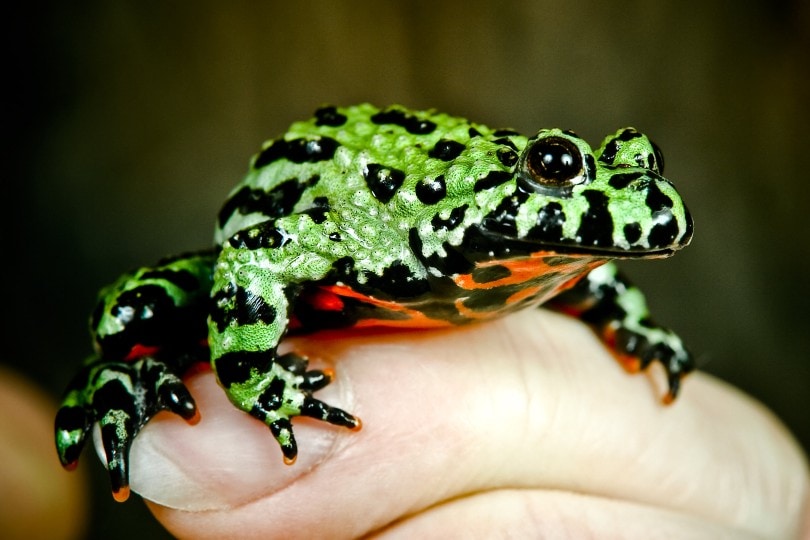
| Experience Level: | Intermediate |
| Family: | Bombinatoridae |
| Scientific Name: | Bombina orientalis |
| Adult Size: | 2 inches |
| Lifespan: | 12–15 years |
| Diet: | Small insects, mealworms, waxworms |
| UVB Lighting: | Low-level light required |
| Temperature Range: | 60 to 70°F (15.6 to 21°C) |
| Minimum Tank Size: | 10 gallons |
Oriental fire-bellied toads are small with shiny, red coloring and black spots. In the wild, they are found in Korea, northeastern China, and parts of Russia.
6. Tomato Toad
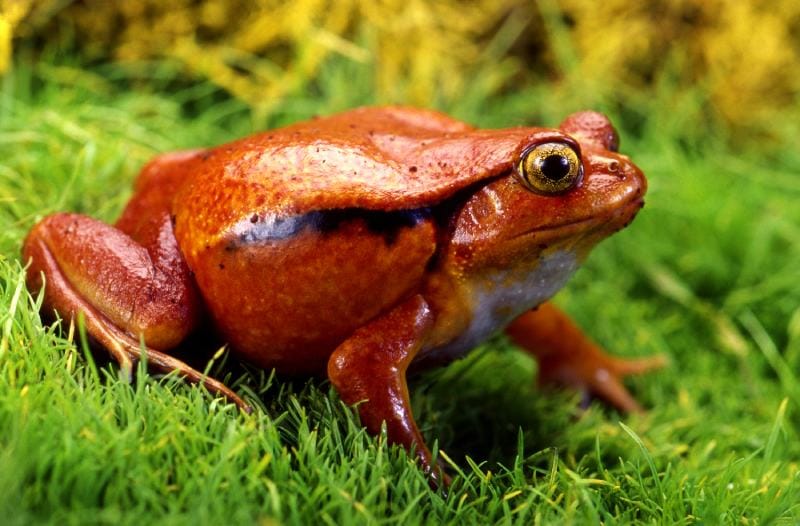
| Experience Level: | Beginner |
| Family: | Microhylidae |
| Scientific Name: | Dyscophus antongilii |
| Adult Size: | .5–3.5 inches |
| Lifespan: | 6–8 years |
| Diet: | Crickets, nightcrawlers, freeze-dried bloodworms |
| UVB Lighting: | Not required |
| Temperature Range: | 60 to 70°F (15.6 to 21°C) |
| Minimum Tank Size: | 10 gallons |
The Tomato Toad is one of the smallest pet toad species. They are round and red in color, much like a tomato. They can live in a variety of habitats, are quite adaptive, and make an ideal pet for beginners.

Conclusion
Toads can make great pets under the right conditions. You’ll need to keep in mind that they do not like being handled, can secrete a toxic substance from their skin, and tend to pee when they are scared and on the defensive.
All toads are potential carriers of infectious diseases, including Salmonella, so you will always need to wash your hands before and after handling this animal.
Toads can absorb harmful chemicals through their skin, so you’ll also need to be mindful of their health before handling them with bare hands. However, they can be easy to care for and make unique, cute, observable pets.
Featured Image Credit: Kathy_Büscher, Pixabay
